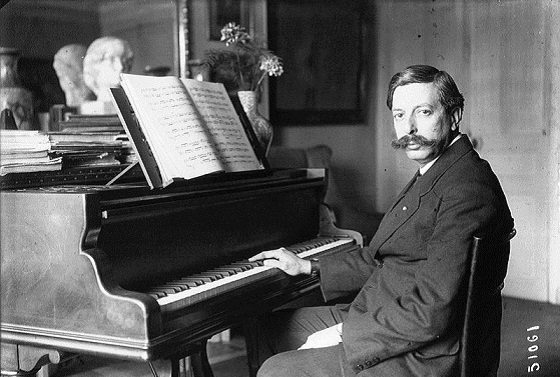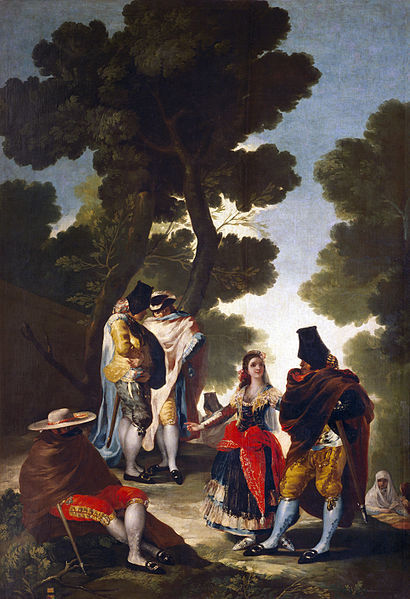
Photo: Enrique Granados, May 1914 via Wikipedia.org
Dazzled and possessed. That's how composer Enrique Granados felt when he encountered the art of Francisco Goya. Granados was born nearly forty years after Goya died, but he felt an instant affinity with Goya's art, especially the way the artist captured the essence of the Spanish character. The artist's use of color also fascinated the composer. Grandados wrote the following in a letter in 1910:
“...I fell in love with the psychology of Goya and his palette... that rosy whiteness of the cheeks contrasted with the lace and jet-black velvet, those jasmine-white hands, the color of mother-of-pearl have dazzled me...”

In 1911, Granados composed a collection of pieces he called Goyescas, meaning 'Goya-like'. The music was inspired by Goya's cartoons portraying colorful characters called majos and majas: members of the bohemian lower class who wore colorful clothes and were known for their brash and saucy behavior.

His imagination sparked by Goya's art, Granados created atmospheric, improvisatory and highly ornamented pieces of musical poetry. One of the most popular Goyescas is Quejas, o La Maja y el ruiseñor, which can be translated as 'Complaints, or the Girl and the Nightingale'. Listen to pianist Alicia de Larrocha perform this work:
Find your own inspiration in the prints and paintings of Francisco Goya at the Blanton Museum of Art! Don't miss their exhibit Goya: Mad Reason, on view through September 25. Perhaps you'll hear an echo of Granados' inner sound world when he encountered Goya's art for the first time.
Photo Credits:
Portrait of Doña Isabel de Porcel by Francisco Goya, c. 1805 (via Wikipedia.org)
El Paseo de Andalucia by Francisco Goya, 1776 (via Wikipedia.org)